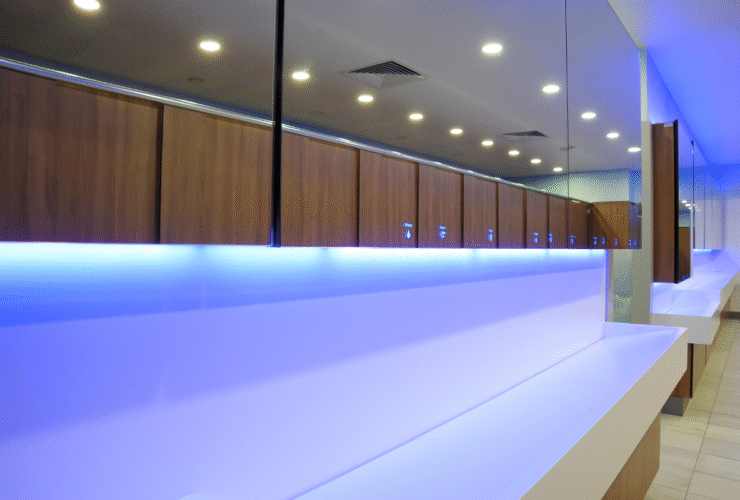Architects, health experts, designers and architects agree fundamental changes must be made to public washrooms. This article explains the key issues with outdated designs that need to be corrected.
The coronavirus pandemic has renewed calls for washrooms to be upgraded on a massive scale. Experts are once again criticising outdated design ideas and options that should no longer have a presence in a modern building used by the public. Some people have even suggested that there should be a set code that designers must adhere to, based on ensuring that infectious diseases can not be spread. Even after COVID-19 is behind us, the way we wash our hands will have changed. People are going to be warier of the surfaces they touch and the environments that they use. With this in mind, here are some key features of washroom designs that need to be updated.
Contact Designs
During the COVID-19 pandemic, it has been crucial to avoiding interactions that involve touching shared services to limit the spread of the disease. However, even before this, there have always been viruses that were spread through these types of interactions. Contactless designs can avoid this issue, particularly in washrooms where there is the danger of hands being unclean, thus spreading bacteria.
In the past, it has been common for public washrooms to use soap dispensers that need to be pressed or activated. Similarly, taps had to be turned on and off as well. These days, thanks to new technology, that doesn’t need to be the case. Dispensers that activate with sensors are available so no touch is needed. Taps can now operate in the same way.
Ultimately, thanks to the latest tech, a bathroom can be designed where no one needs to touch anything when washing their hands. Toilets can even flush automatically too, depending on the budget for the initial setup of the washroom.
One of the current issues is still the handles on doors in washrooms. These are one of the most common points where bacteria can be spread. Designers are now working on washrooms that don’t have handles as part of the design. Instead, doors can open and close through the use OF sensors as well.
Toilet Dispensers
Toilet dispensers may also present a clear issue for users. Toilet dispensers are often large and do not match the thin rolls that they produce. This makes it difficult to get the paper needed. Some have suggested that toilet rolls would be more useful and easier for users.
However, this simply isn’t an option in a washroom with a lot of foot traffic. Instead, toilets should have automated toilet rolls dispensers.
That way, users can take what they need without having to mess with the device itself.
Focus On Bathroom Urinals
In the past, men’s washrooms have focused on providing a urinal rather than individual cubicles. It was common to find a lengthy urinal and only a couple of cubicles. These days however, many people do feel more comfortable using cubicles as it provides them with space and the privacy that they need. As such, these should be a key focus of the design, even if you are building a men’s washroom.
In general, it is important to ensure that there is a healthy amount of free space within the washroom itself. Sinks should have enough space between them to wash your hands comfortably without feeling as though you are too close to the person next to you.
Basic Decor
Beyond designs that do not prevent the spread of viruses, outdated washroom designs also tend to be rather basic. It’s clear when viewing older washrooms, that very little effort or focus has gone into ensuring that the bathrooms are a pleasant place to be. This doesn’t have to be the case.
For instance, designers can now explore options such as biophilic design. Biophilic design refers to decor elements that allow us to get back in touch with nature. This can be literal or provide the feeling and texture of nature. For instance, rather than a completely industrial design washroom walls can include materials that imitate wood. Research shows that biophilic design can help make an area feel more welcoming and relaxing. As such, this could be perfect for a washroom in a shopping center or business office.
Other materials can be used as well to upgrade the design of the bathroom. Many modern bathrooms use materials that match the aesthetic of expensive design features such as marble and granite.
It’s clear then that while there are numerous issues with outdated toilet designs, there’s a solution to every problem and a way to reinvent washrooms for the modern age.



